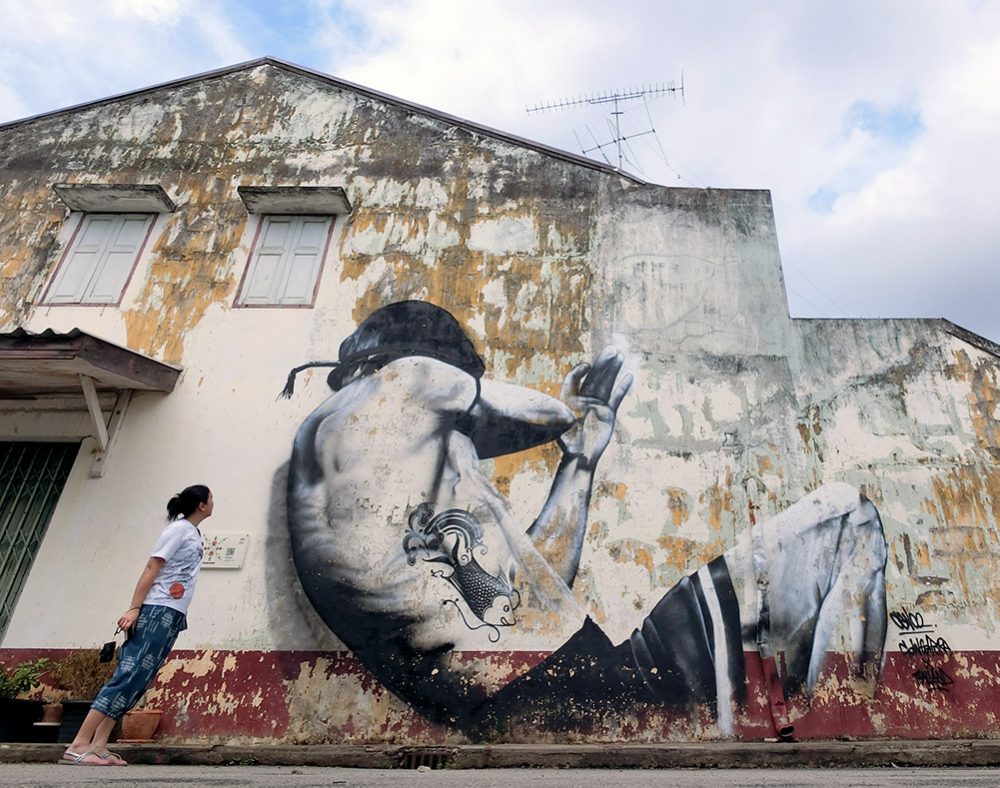Most people looking for a Thailand beach holiday are familiar with Hua Hin which is not only a favourite of the Thai royal family, but has becomes quite a popular place for a beach getaway near Bangkok. If you’re looking to enjoy a less crowded alternative to Hua Hin, consider heading up to nearby Cha am instead. I put together a guide on things to do in Cha am for anyone planning a quick Thailand vacation
This post is sponsored by where I was invited to stay for a few days – check out my hotel review for more about this lovely resort by the sea. The hotel helped coordinate my transport and itinerary but I’ve also included information in case you were planning this trip on your own.
Where is Cha am?
Cha Am is Hua Hin’s lesser-known cousin, about 170+km south of Bangkok along the gulf of Thailand. Cha Am is located en route to Hua Hin which is an additional 30-40 mins drive further south.
How to get from Bangkok to Cha am
By car
It takes a minimum of 3 hours to drive from Bangkok’s Suvarnabhumi Airport to Cha am if you don’t run into any traffic jams.
You can also use Klook to arrange for transfer between Bangkok/Airport and Hua Hin [affiliate link] for about S$90-S$140 for a small group. Check out this other Klook link [affiliate link] if you are coming from other parts of Thailand like Pattaya, Kanchanaburi or Khao Yai for example.
By train
If you have more time or prefer slower travel, you can hop on a train from Bangkok’s main railway station Bang Sue Grand Station. Trains take about 4-5 hours on average to reach Ban Cha am [Google map], which really is the slow way to get there.
How long to spend in Cha am?
While Bangkok is a quick 2 hour flight away for Singaporeans, you will still need a minimum of 3 hours of driving to get to Cha Am from Suvarnabhumi Airport because as of 2023, there are no direct flights to Hua Hin Airport, which basically mean about half your day spent in transit.
I would recommend a minimum of 4D3N for a trip to Cha am, or longer if you can afford the time to explore nearby Hua Hin as well. Thai people like going to Cha am for a weekend trip so it tends to be crowded over the holidays and weekends, so it would be good to take a longer trip so you can enjoy a mix of things open on weekends and a quieter time.
Things to do in Cha am
Cha am Beach
Cha am beach is a pretty long 5km+ stretch of white sand along the gulf of Thailand. I visited on a weekday so it wasn’t too crowded at all, but judging from the carparks and number of umbrella vendors, I bet this place is absolutely packed on weekends.

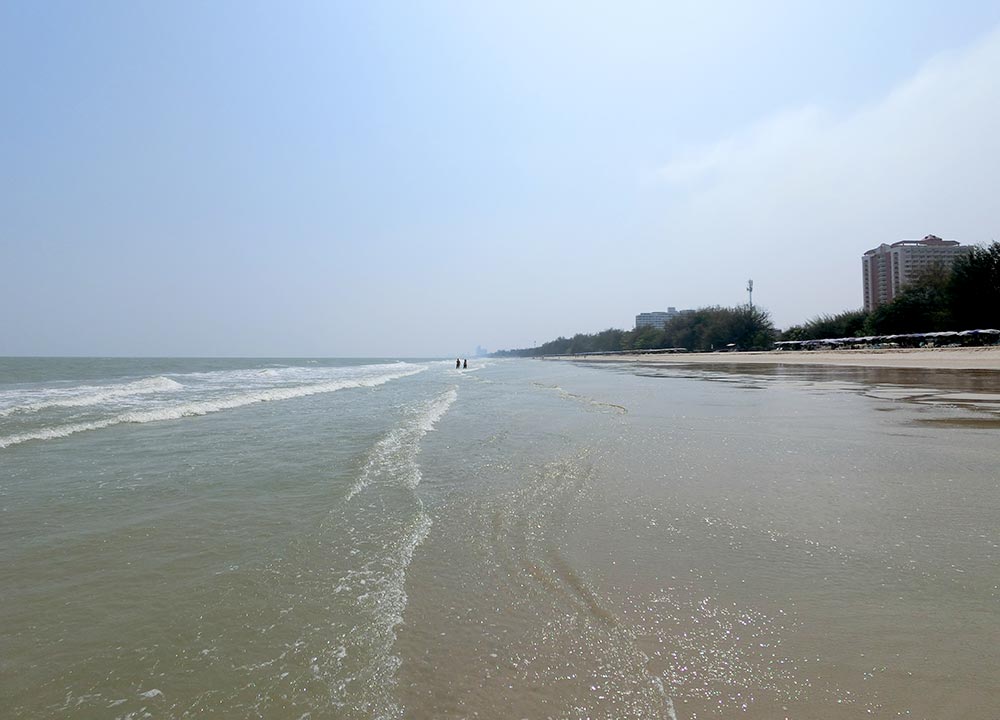
Apparently the Hua Hin beach is nicer because the waves are a bit less choppy and the water is clearer, but Cha am Beach I thought was nice enough. Like Hua Hin Beach, it’s apparently been suffering from some erosion so there might be sea walls or dykes up in certain spots.
It was February so while the sun was fairly hot, it was a tad too windy the moment you got out of the water. The shore at low tide was quite gently sloping and stretched quite a long distance.

Sun loungers can be found along most of the beach – we were dropped off at the northern end where there was a lot of tree shelter as well, so larger groups could opt for chairs beneath the pine trees a little further back. We picked the loungers under the umbrellas on the shore. It cost 100 THB (roughly S$4) per chair + umbrella and there was no time limit.

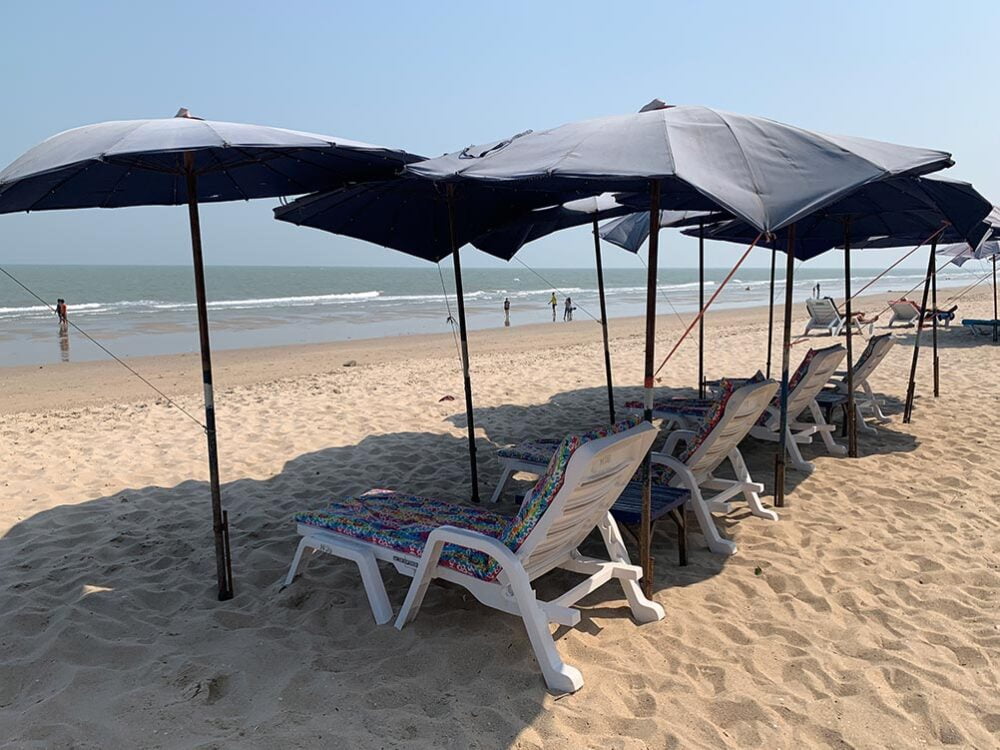
I wish I had a little bit more time to spend here – along the 5km+ of beach runs a parallel road and a mix of shops, cafes, restaurants and hotels which we didn’t get to explore.

Cha am Beach หาดชะอำ [Google Maps]
Khao Nang Phanthurat Forest Park
Spend a morning hiking the beautiful limestone hills of Khao Nang Phanthurat Forest Park which offers some lovely forests to wander through and panoramic views of the surrounding landscape. This isn’t a leisurely walk in the park though I wouldn’t say it was too hard, but it’s a great way to appreciate the flora and fauna of Cha am.

The name Khao Nang Phanthurat Forest Park might not mean much to us, but those familiar with the Thai folk tale Sang Thong might recognise that ‘Nang Phanthurat’ is the name of a giantess in the story who disguises herself as a human, adopts the main character Phra Sang when he was a child. He eventually finds out she’s a bloodthirsty giantess and steals her treasures and escapes, and poor Nang Phanthurat dies of a broken heart. This park was apparently named because from afar these limestone hills look like a giant sleeping figure.
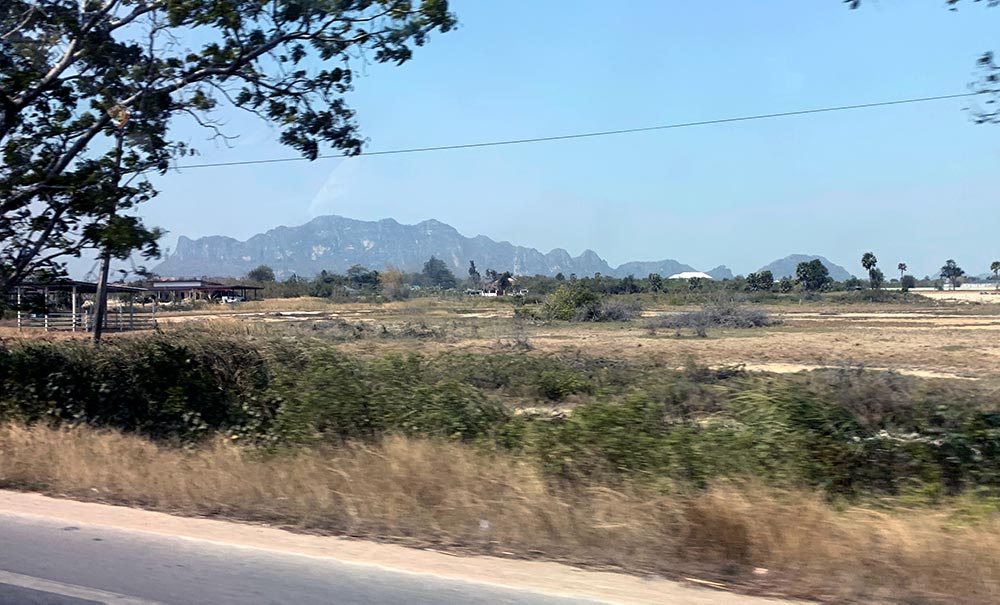
I mention these details to give you more context to the names of the various landmarks and features you will come across as you hike the trails of this forest park which are named for moments in the story! Otherwise it just seems like weird names… this Bangkok Post article is a good read if you want to learn more.
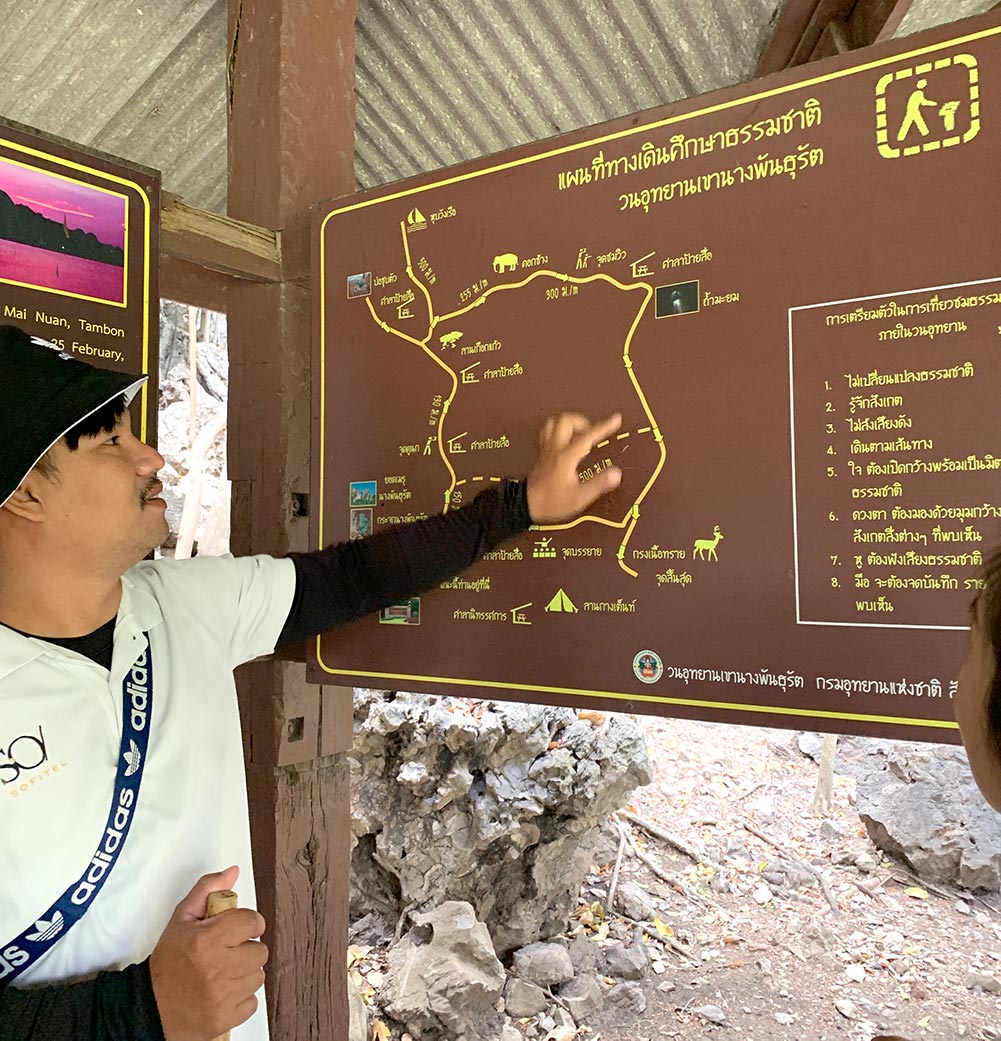
Phanthurat’s Mirror
Right at the entrance of the park is a short trail up to a hole in a rock known as Phanthurat’s Mirror, which is supposed to be the mirror that the giantess used to check that her human disguise was still working.
For us normal folk, it’s a steep but short and well paved stair climb up to a ledge where there is a small shrine Mae Nang Phanthurat Shrine, and a 4m-tall oval shaped opening in the rock leading to a viewpoint.

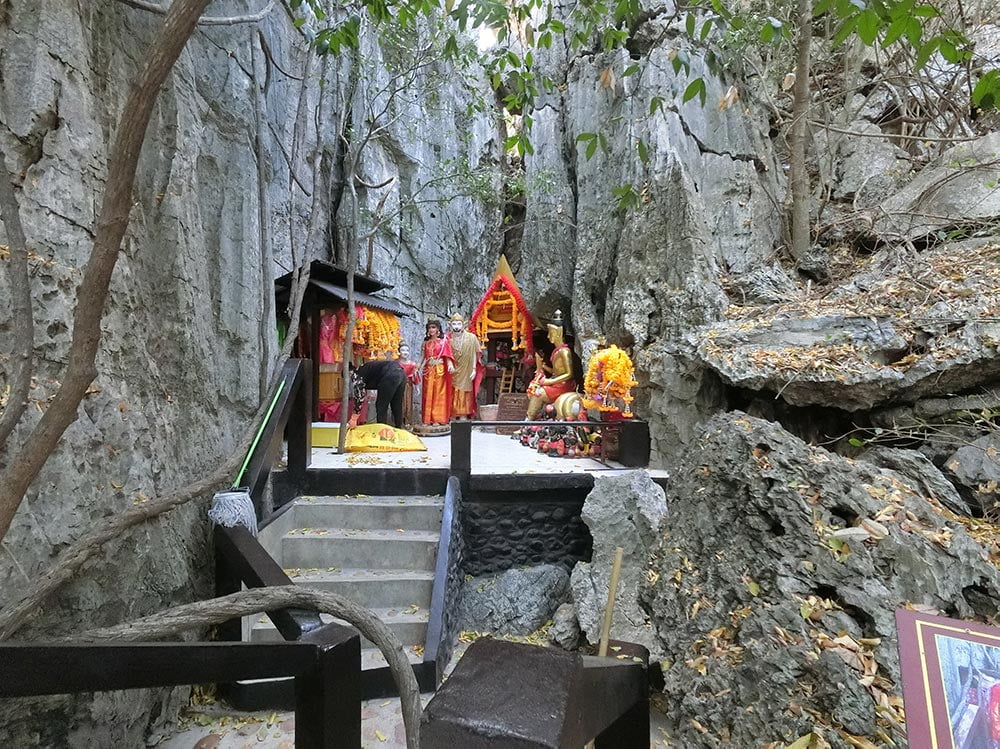
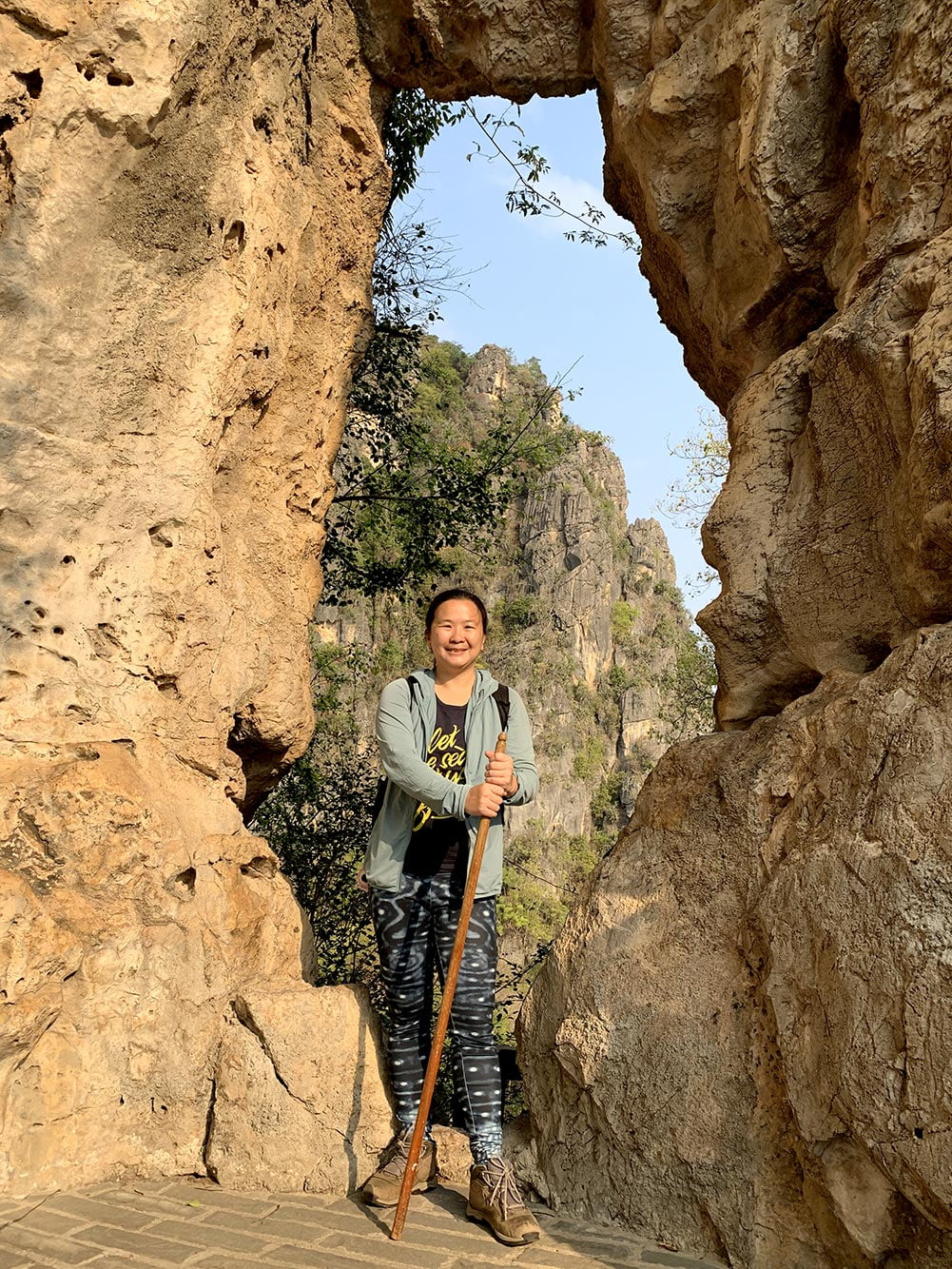
From the Mirror, you can look up across the park and faintly see the Thung Setthi Viewpoint platform in the distance, and while it looks impossibly far away, we made it there eventually!
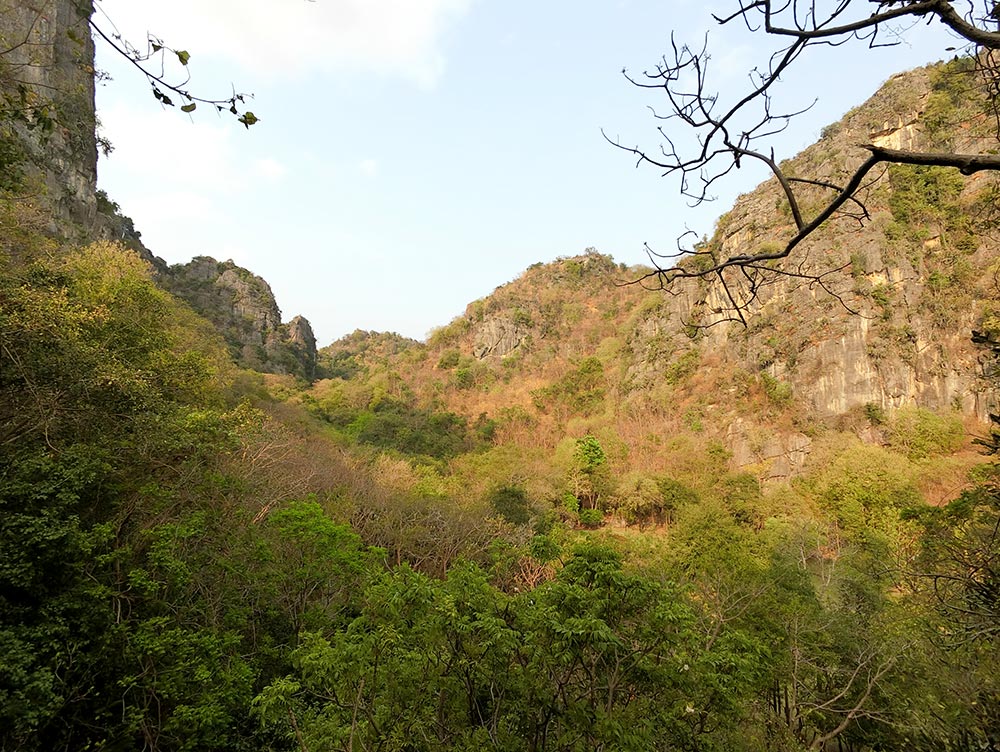
From the mirror, we doubled back to the entrance and headed to the actual main trail of Khao Nang Phanthurat Forest Park.

Lady Glass Shoe Field
The first main landmark we passed through is a place called Lady Glass Shoe Field. Don’t know if it actually looks like a shoe, but it’s basically a flat clearing with a bunch of trees and apparently a fairly popular photography spot.
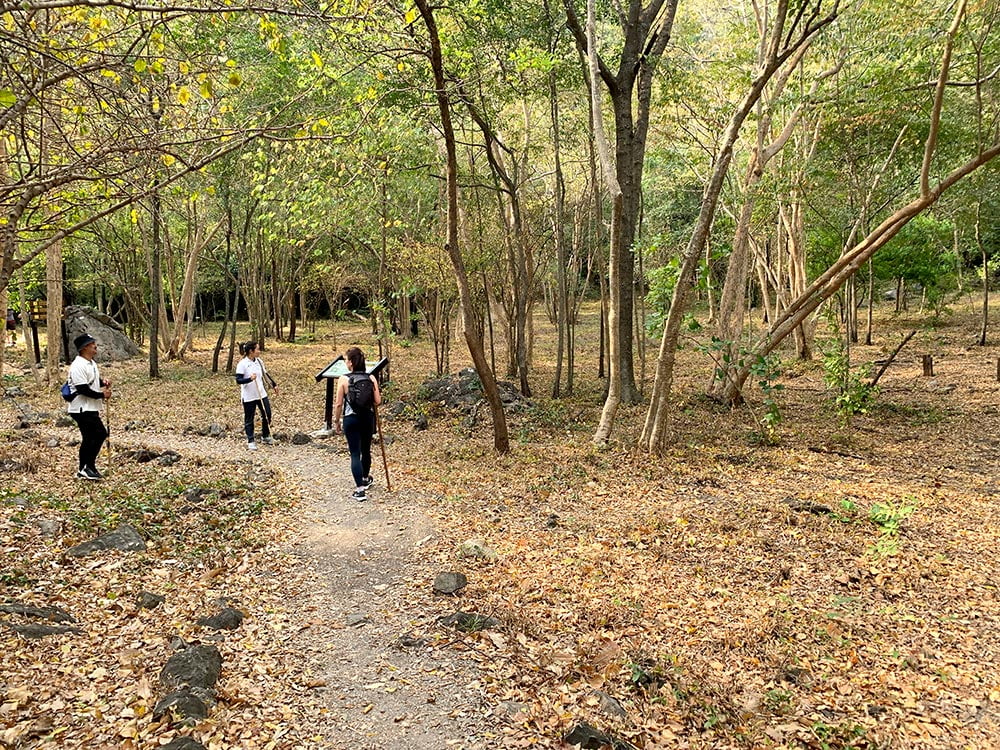
Nearby this area is another place called Sang Thong’s Holy Well, which in the story is where the protagonist Phra Sang bathes himself and turns his entire body golden as a disguise to escape Nang Phanthurat (let’s not worry about logic at this point), which is why there is a slightly creepy golden statue by the pond here.

Khok Chang Viewpoint
The first viewpoint we get to is Khok Chang Viewpoint – on a very clear day you can apparently see all the way to Khao Wang in the distance! It overlooks fields where cows and pasture are found. Elephants were apparently found here too but according to the Sang Thong tale, this was Nang Phanthurat’s favourite elephant hunting ground.
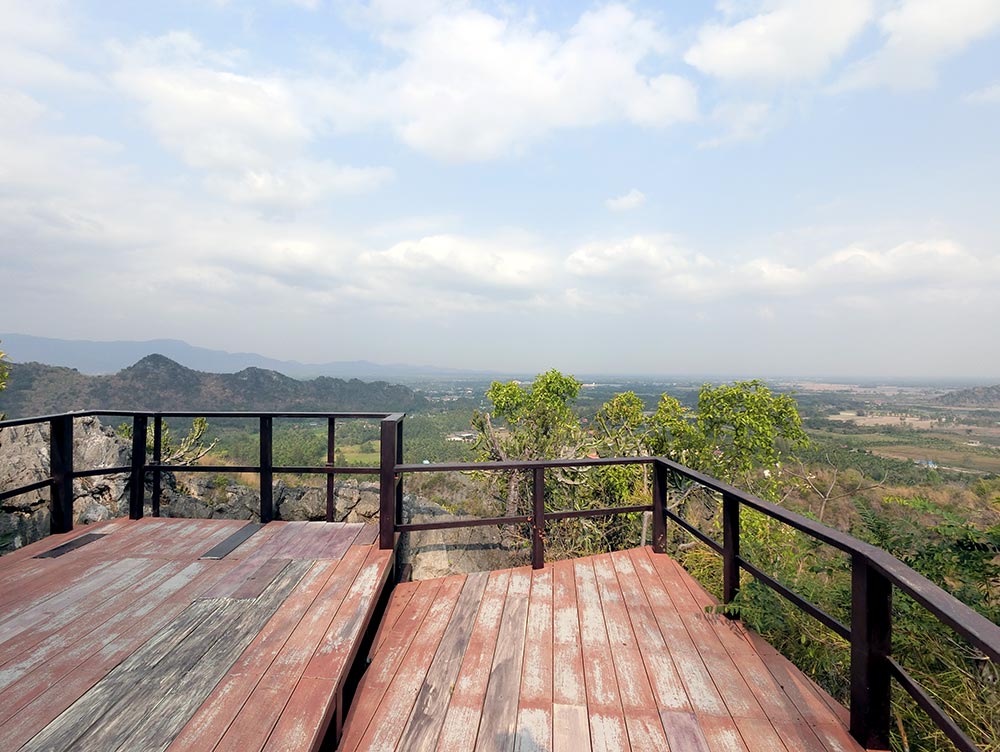

Thung Setthi Viewpoint
The path changes along the way and becomes a bit more rugged. Generally everything is decent condition, but the path does get rougher the higher you go. I really enjoyed the sections where there were lots of bamboo plants – we were there in February which is the cool/winter season so the ground was covered in dried bamboo leaves like a strange hybrid of Autumn and Winter.

Finally after about 2 hours, we found ourselves up at Thung Setthi, highest point on the trail and where we never thought we would actually climb up to!
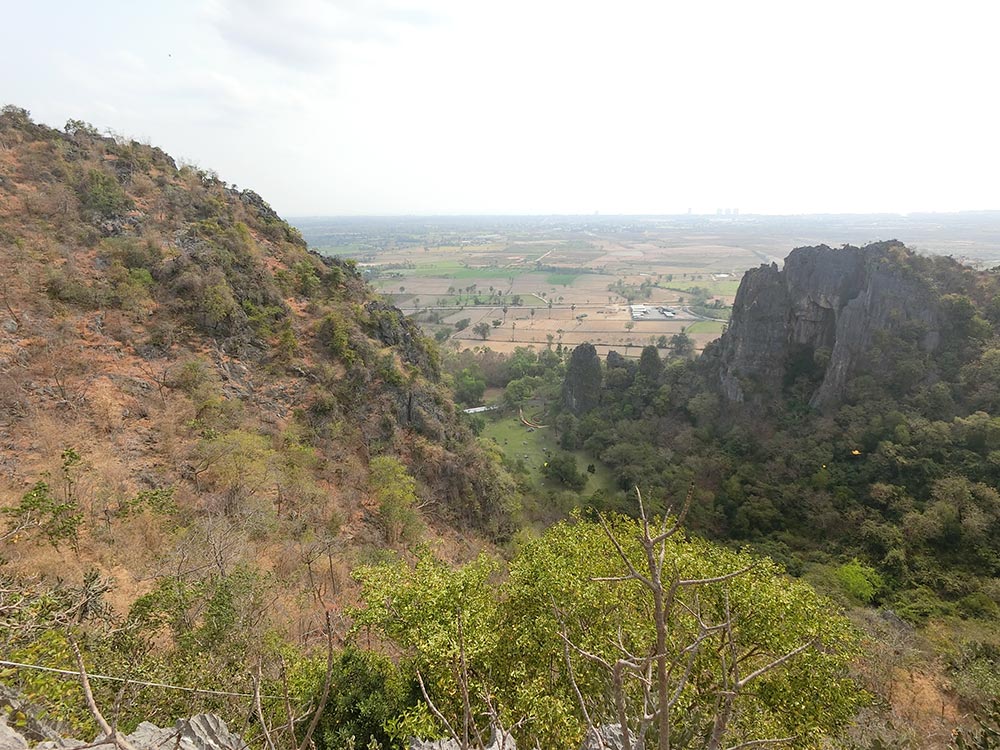
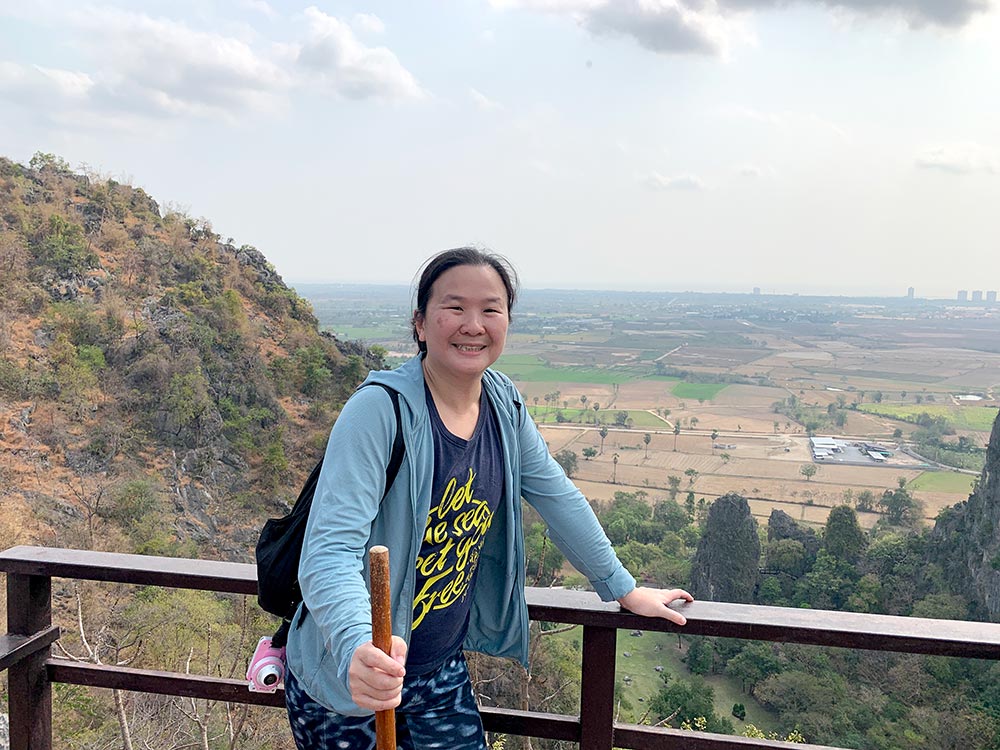
The entire hike took about 3 hours in total and was a nice morning spent getting a workout and enjoying nature. Definitely do this in the cooler months and go up in the morning when it’s not as warm – you can head to the beach to relax after this!
Khao Nang Phanthurat Forest Park วนอุทยานเขานางพันธุรัต [Google Maps] Open daily 830am – 5pm.
The total hike including the short walk to Phanthurat’s Mirror and the main trail covering the 2 viewpoints took us about 3 hours to accomplish.
The trail is relatively well paved at the lower levels but gets quite rocky up top – definitely wear good shoes because those rocks are sharp. We also had long walking sticks to help as some parts don’t have a lot of handholds.
You can visit on your own, but SO Sofitel Hua Hin arranged this excursion for us and provided a guide as well as refreshments before and after the walk. They open these tours up to the public if you’re interested – 500 THB per pax or 2,500 THB . See more details in my review or on SO Sofitel Hua Hin website.
If you have more time to spare, you can also consider visiting Kaeng Krachang National Park which is about an hour’s drive west of Cha am, or heading further south towards Hua Hin where Khao Sam Roi Yot National Park is 1-1.5 hours drive away.
Nayang Bat View Point
One of the more interesting things you can do in Cha am is to check out the bats at sunset. While it might sound like a weird things to do, every evening over 2 million fruit bats emerge from a cave that they live in the mountains and go in search of dinner.
I’ll preface this by saying that the experience in person is a lot more wow that what you might take away from looking at these pictures. While it’s not a batman situation where the bats all emerge at once and blanket the sky, watching them stream out of their cave like smoke feels like watching a NatGeo documentary in real life.

You don’t actually visit the cave itself, but a viewing platform located in someone’s house in Nayang Village. It’s private property but easy enough to find with Google and a car. The platform is raised and has a few wooden benches that you can sit at while waiting for the sun to set. We reached there a bit before 550pm and waited around until 630pm for the bats to emerge.
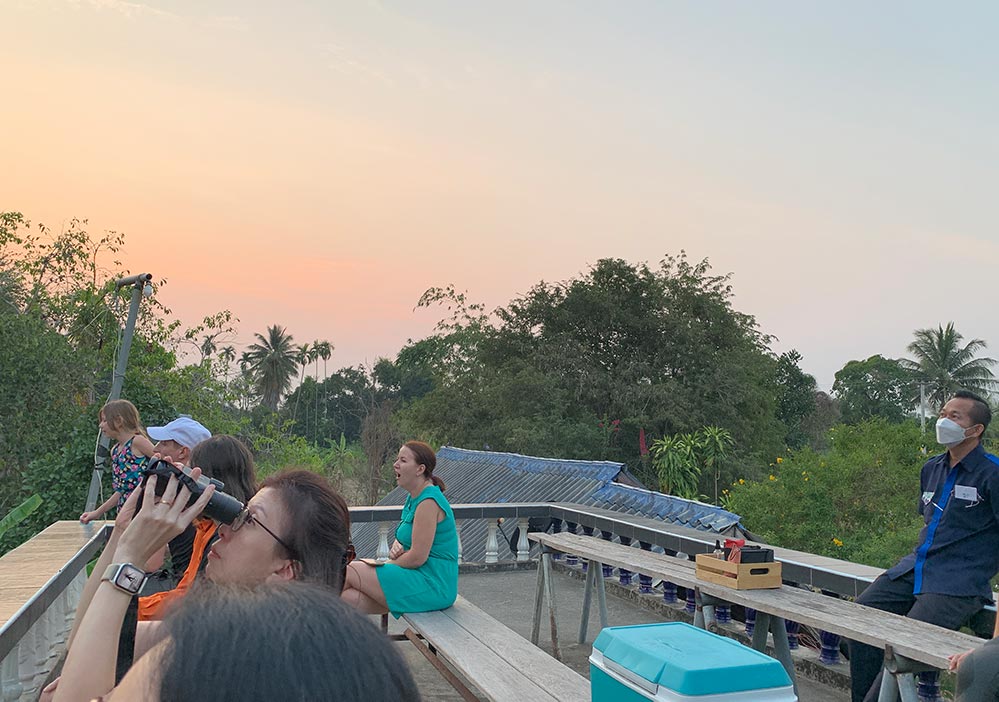
While the sun sets, you might spot hawks circling around – they’re waiting to eat the bats when they emerge. Bet it feels like a buffet line~ Our guide said that might be mountain goats as well if we looked hard enough, which might have just been a way to keep us from getting bored haha.
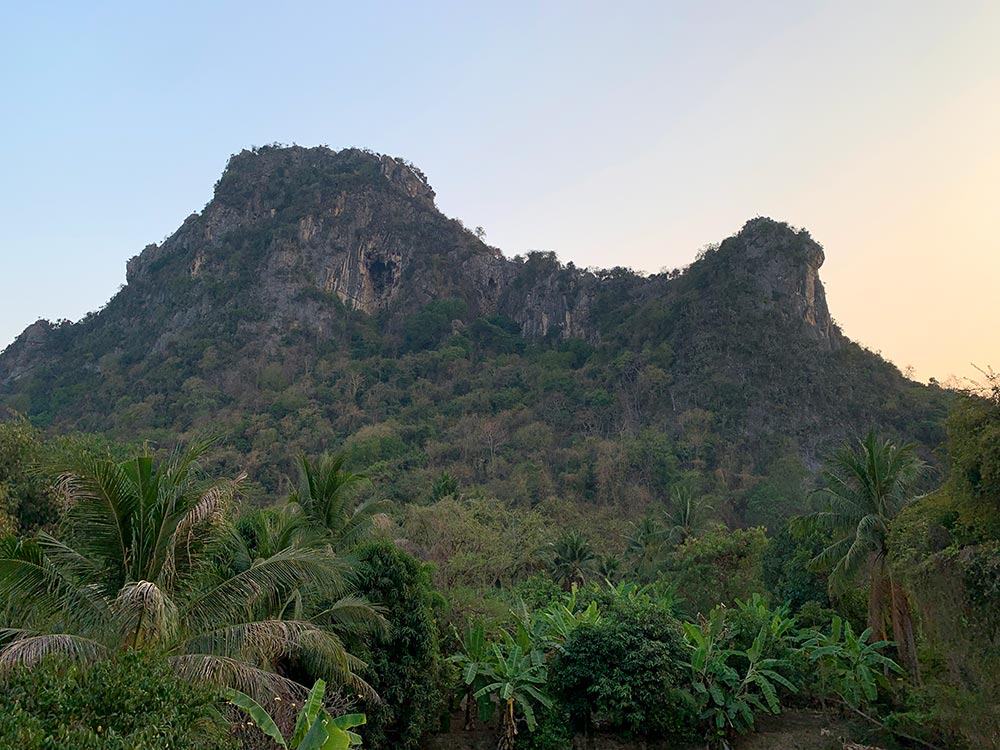
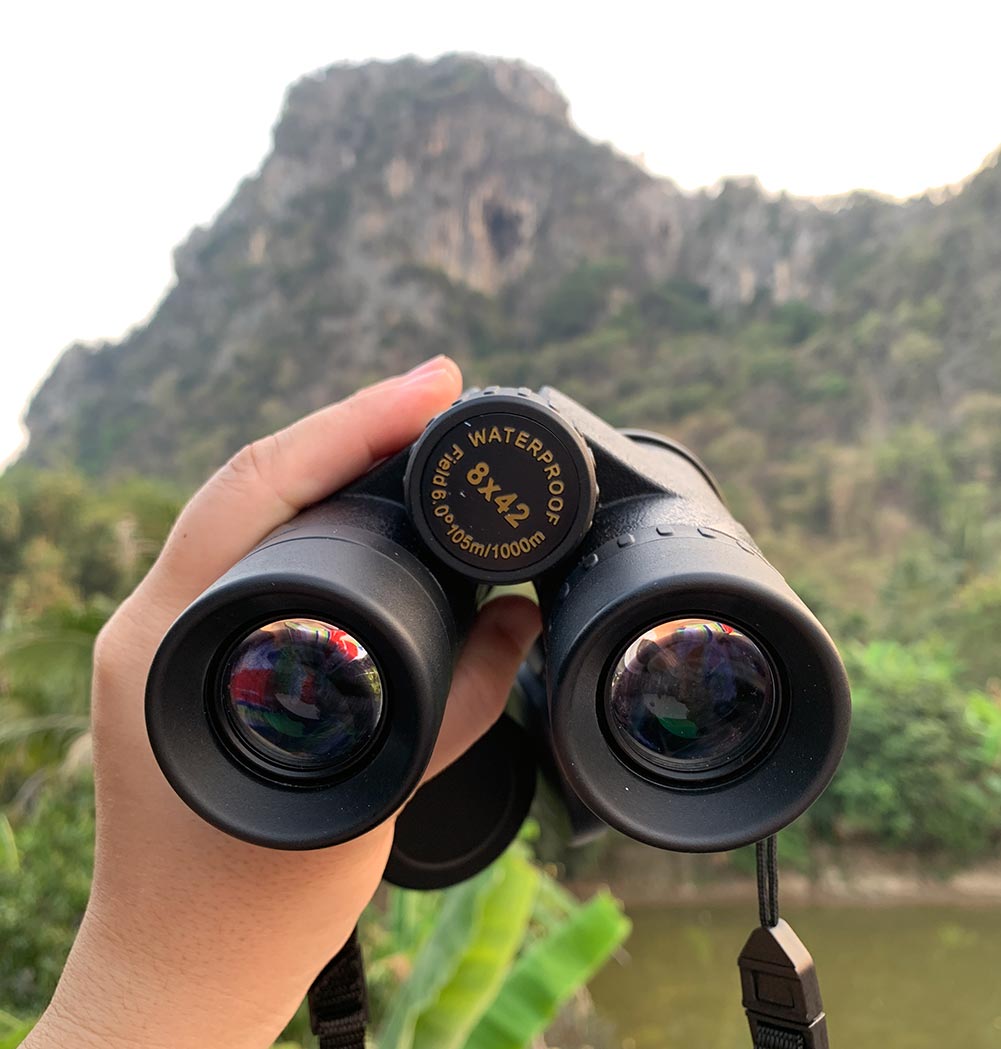
We were there a little early just to make sure that we wouldn’t miss the moment when the bats emerged. After about 40 minutes of waiting, the first slew of bats showed up, streaming out from the mountain like a very small stream of smoke. That stream grew larger and larger and weaved around – you know how they portray awful music notes in cartoons? It felt like that to me!

It felt like much longer, but the whole emerging actually took about 15 minutes or so. Our guide said we were quite lucky to see a lot of bats – her previous experience saw a lot less. Eventually the bat stream thinned out and shifted with the wind, dispersing as the little fruit bats flitted past us in search of fruit trees and orchards. They would return back to the cave on their own time at around 3-4am before the sun came up.
I saw bats asleep in the trees in Tioman, but this bat feeding experience was something quite unexpected for me, I definitely recommend it if you haven’t seen something like this before.
Bats View Point จุดชมค้างคาว [Google Maps]
The viewing platform is in a house that is privately owned and located in a village so you will need to arrange your own transport as well. There is no fixed entrance fee but do make a donation to the family living there.
You can visit on your own, but SO Sofitel Hua Hin arranged this excursion for us and provided a guide as well as refreshments before and after the walk. They open these tours up to the public if you’re interested – 500 THB per pax or 2,500 THB . See more details in my review or on SO Sofitel Hua Hin website.
Wat Cha am Khiri
There are plenty of temples all over Thailand and Cha am is no exception. Wat Cha am Khiri is a small temple complex dating back to 1864 with some historical cave shrines. The most impressive bit of course is the entrance – a 112-step golden staircase with 7-headed nagas on either side. Along the way up there are 7 bells (representing the 7 heads) that you can ring for blessings.
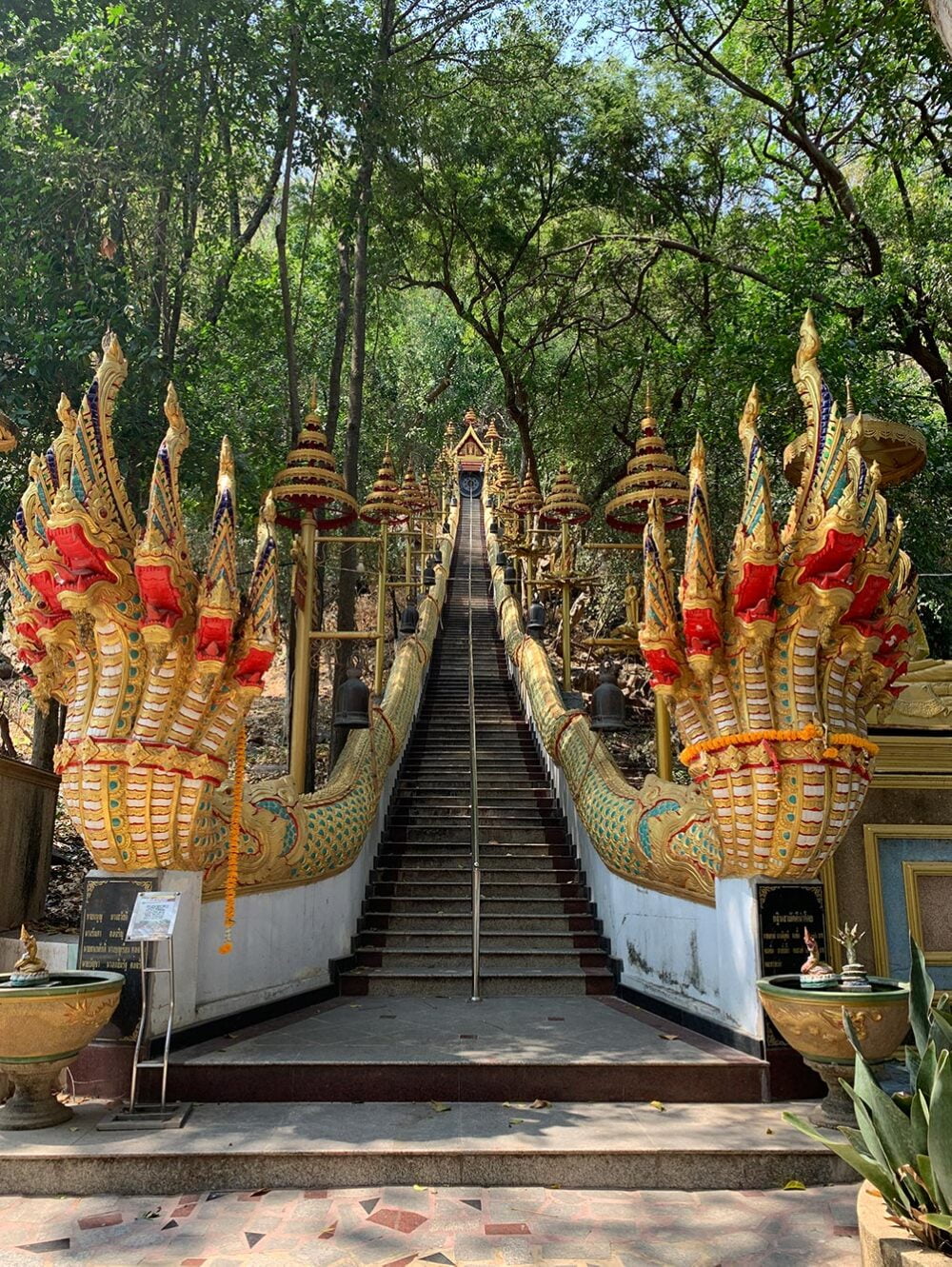

On the left side of the stairway is a small cave shrine – you need to remove your shoes here, and through the small opening is a cave that is bigger than you might think, as well as several Buddha statues that are quite old too.



We headed to the right of the stairway where there was another bodhi-leaf shaped cave called Bai Pho cave. There were wind chimes installed here so it felt very peaceful.
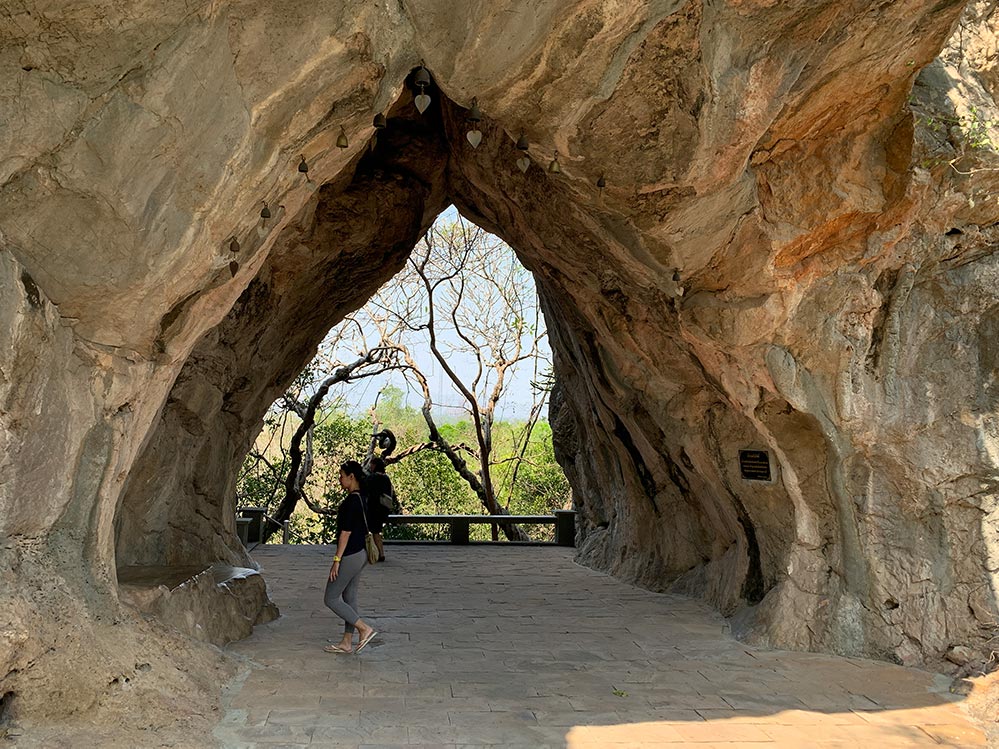
Another cave just beyond the Bodhi Leaf Cave felt a lot like being in a tomb raider movie.


There are many smaller shrines and what looks like a cemetery and crematorium area as well there – we didn’t spend too long before we headed back to the main road.

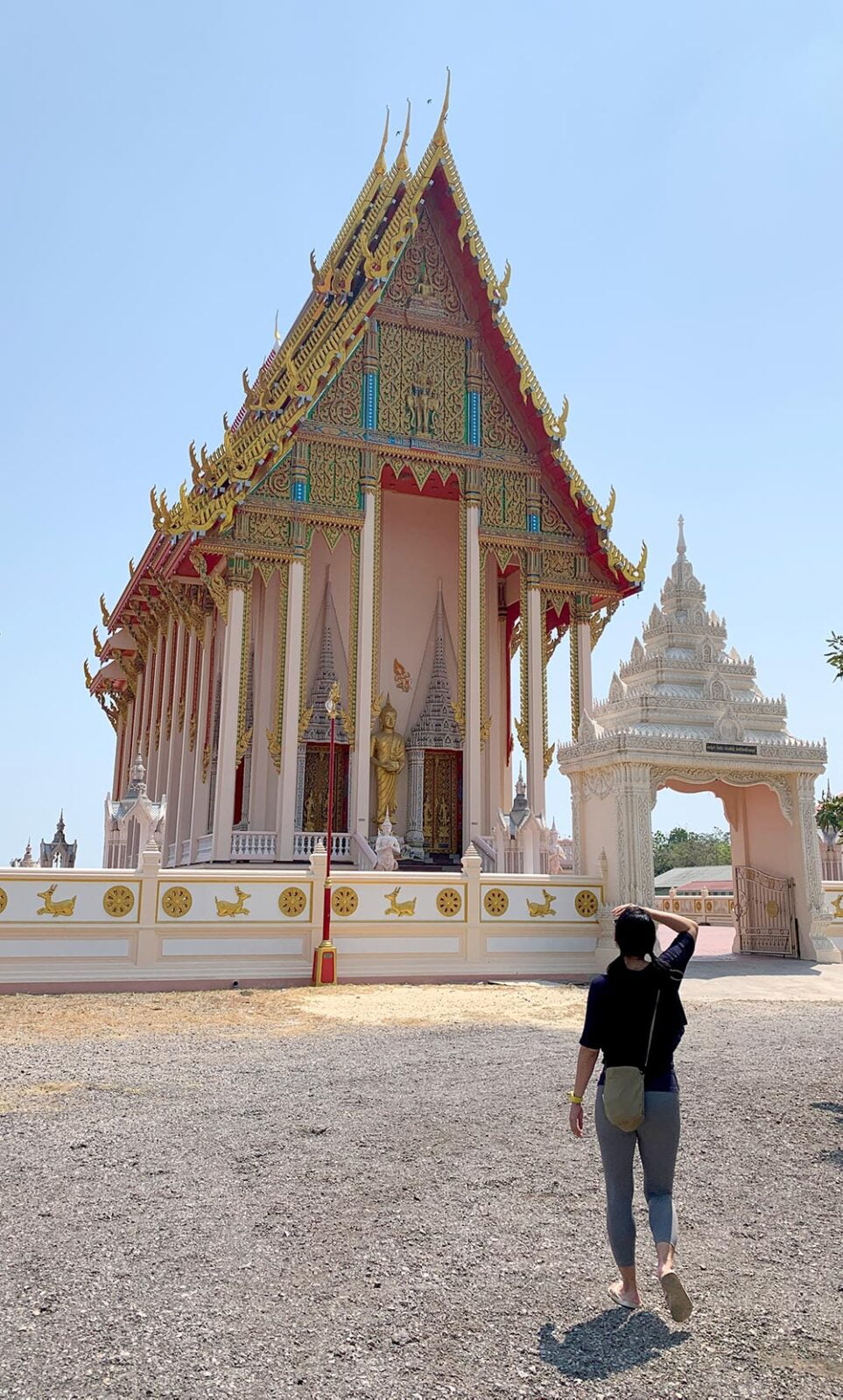
Wat Cha am Khiri วัดชะอำคีรี [Google Maps]
Wat Cha am Khiri is located quite close to the train station, but its location along the hillside and surrounded by trees makes it feel much more remote. When we visited on a Monday, there were maybe 2 or 3 other people there with us.
I wanted to check out the Mrigadayavan Palace, summer palace to King Rama VI but unfortunately it’s currently closed to the public.
Where to eat in Cha am
The main thing you need to eat here is seafood. Cha am is known for its cheap and good seafood and there are plenty of seafood restaurants all around. The hotels also have their own restaurants that do serve up more western style seafood, but I recommend eating at a local Thai seafood restaurant.
Khrua Khiang Khluen
I call this the KKK in my head because I can never get the pronounciation or spelling right, but this restaurant was recommended by our hotel receptionist as a place locals would bring their friends to eat at. It’s located just north of Cha am Beach right by the sea, so definitely lovely seaside vibes.

You know it’s quite a local joint because there wasn’t very much English spoken at all here, though luckily they had some English translations on the menu. Judging from the number of tables and staff they had around on a weekday, I think this place gets pretty crowded on weekends, but we had our choice of seats and didn’t have to wait too long for our food either.


Ultimately we decided on a seafood tomyam soup, squid fried rice, curry soft shell crab and some river prawns that turned out to be absolutely gigantic. All that along with some Chang Beer cost about 1,000 THB which works out to about S$10 per person (i.e. very cheap indeed!).
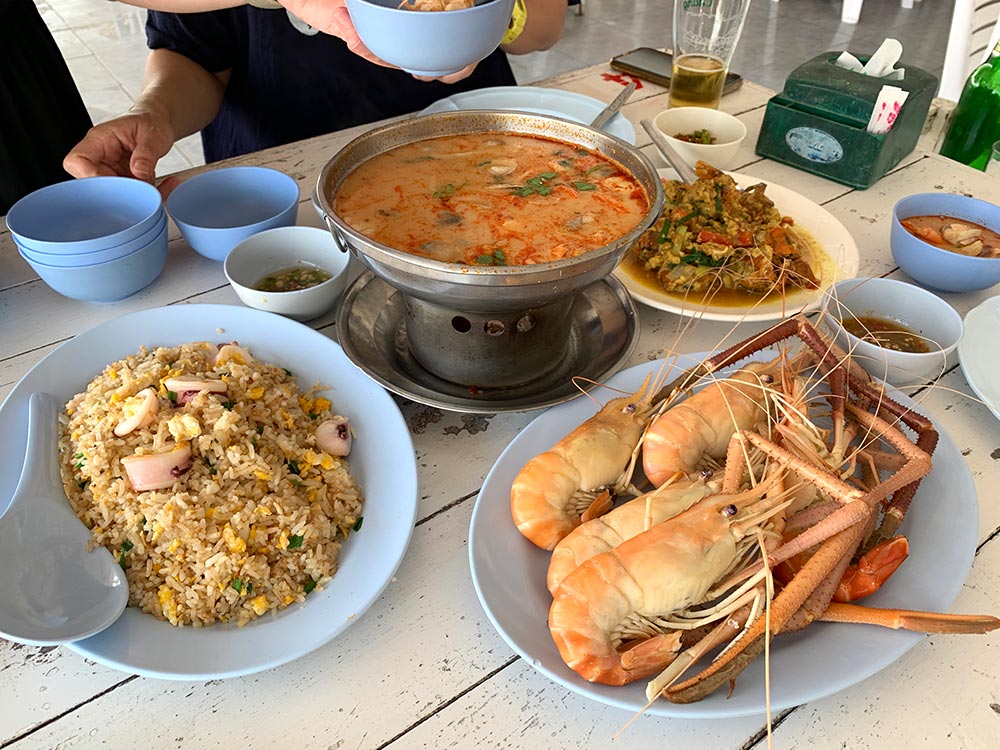
There are several seafood restaurants along this stretch and along Cha am beach as well if you’re driving and want to explore. View Talay Restaurant was another place I considered, though I was mostly amused by the reviews of people saying that there isn’t any sea view at the restaurant because it’s a bit more inland
Khrua Khiang Khluen ครัวเคียงคลื่น [Google maps] Open 9am – 9pm, closed on Wednesdays.
Panna Cafe
Hua Hin has some Instagrammable hotspots, and Cha am actually has some cute little cafes worth checking out as well. My schedule was pretty packed, so I decided to check out Panna Cafe, a cute little spot amidst rice paddy fields where you can sip on pretty drinks while enjoying the countryside view.

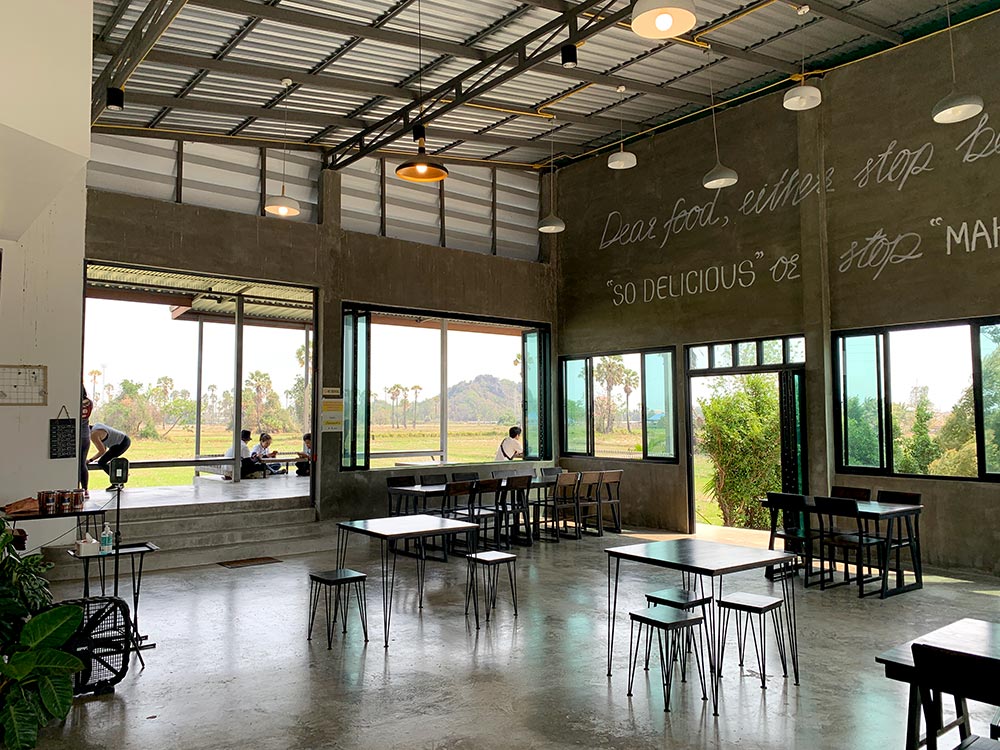
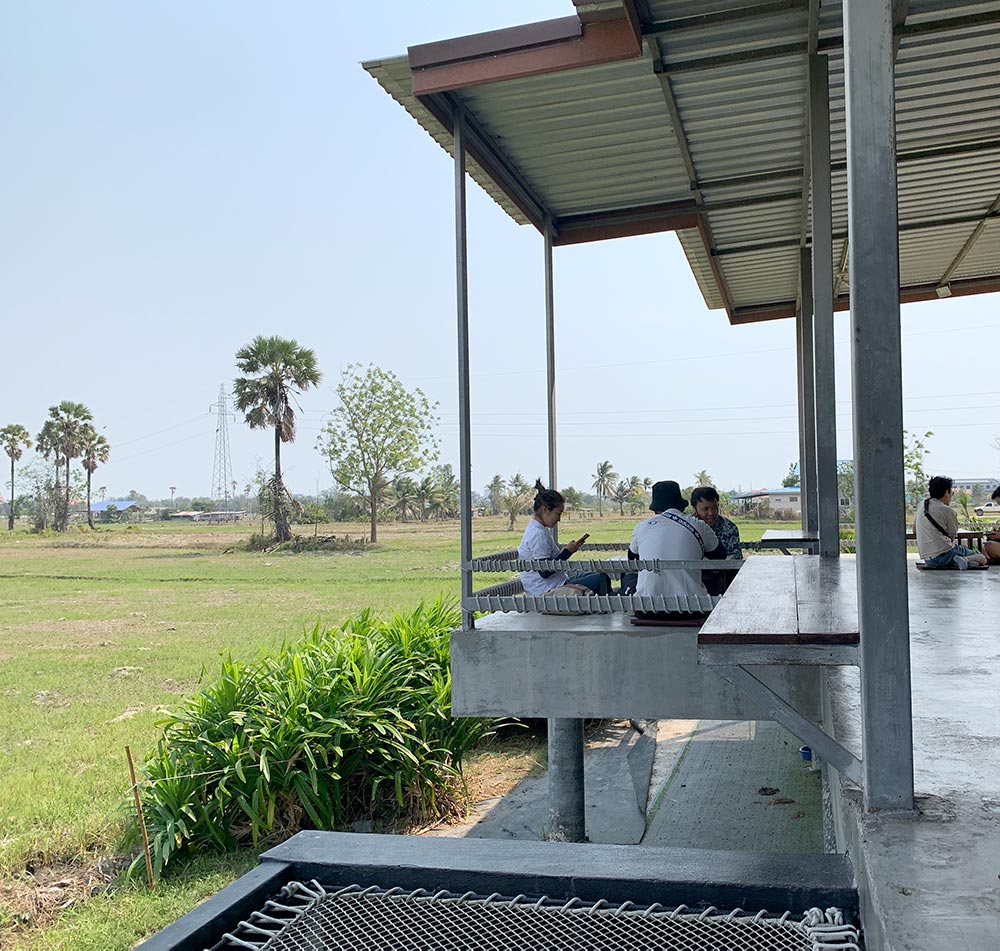
I really liked the nettings that we could chill out on while enjoying the view. There weren’t any crops planted while we were there, but we did have a couple of cows grazing for company.

I wish we had a bit of time to eat – their vermicelli with grilled pork is supposed to be quite good, but alas we had lunch planned so we just stopped in for a drink. You could definitely have lunch here as they have a decent food selection that includes rice and noodles.
They had quite a wide selection of cafe-style drinks: I had a passion fruit sorbet while my friends had the coconut frappe and a strawberry-matcha latte. Drinks range from 65 – 95 THB (S$2.50-4).

Some other cafes I had on my list to visit include SoulMarch cafe which is a cute little house that remains me of a Korean-style cafe, as is Something to Feel. Le Cereste has European garden cafe vibes
Panna Cafe ปันนา คาเฟ่ [Google Maps] . Open 930am – 5pm, closed on Mondays.
Tumlay Bar and Cafe
TUMLAY is located right next door to the SO Sofitel along the coast and a great place to get a drink and snacks while admiring the seaview. It’s also part of a mini caravan camping park called Away by aday Hua Hin where you can stay overnight by the beach in repurposed trailers!


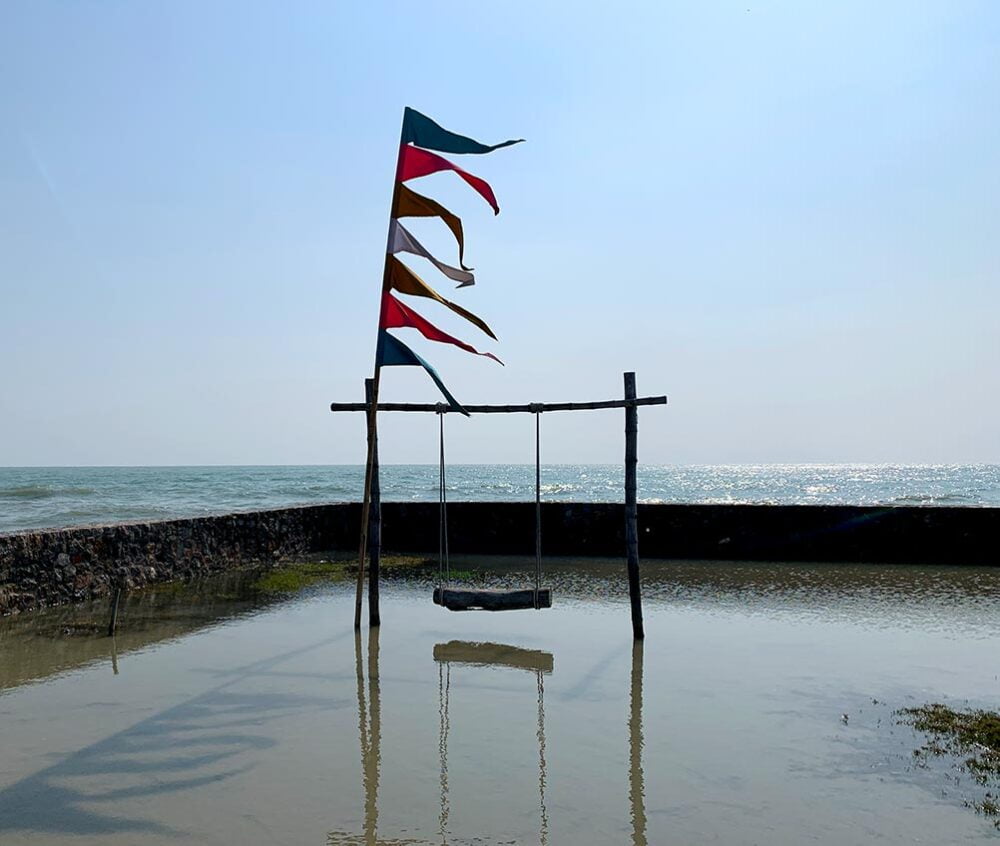
TUMLAY Cafe and Bar [Google Maps] is located right next to SO Sofitel Hua Hin. Open 10am – 9pm (Opens at 830am on Sat and Sun).
Cha am Night Market (Wed only)
Cha am does have its own night market near Cha am train station, but it only opens on Wednesdays so I didn’t get a chance to check it out unfortunately.
You’ll need to head over to Hua Hin if you want your Thailand night market fix – read more in my Hua Hin post.
Hua Hin Night Market (open every night) is a traditional Thai night market near Hua Hin Train Station selling souvenirs, food and many seafood restaurants. This is your best option for weekdays.

On weekends you have a bit more selection if you go a little further south to Khao Takiap Road in Nong Kae – Cicada Market (Fri-sun night only) is a chic weekend design and craft market with sections for food and art. You have to exchange money for coupons for the food stalls, and they also have 2 stages with live performances for entertainment.
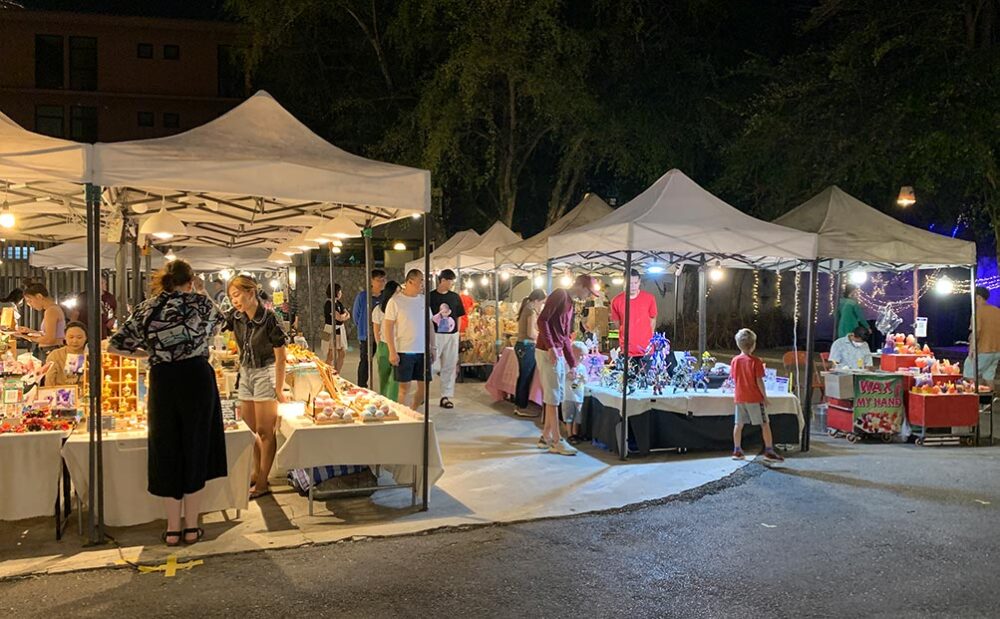
Just next to Cicada Market is Tamarind Market (Fri-sun night only), a dedicated food market with stalls selling Thai/International food on weekends. Besides fodo stalls, there is a fair amount of open-air seating and a small stage showcasing live performances. It’s a nice place to have dinner on a cool evening!

Cicada Market ซิเคด้า มาร์เก็ต [Google maps] and Tamarind Market แทมารีน มาร์เก็ต [Google maps] are located close to Nong Kae Train Station. The famous Wat Khao Takiap temple on a hill by the sea is also not too far away.
Near Cha am: Things to do in Petchaburi
Cha am town is definitely quieter than Hua Hin further south, but one thing you can do en route to Cha am from Bangkok is to pop by some interesting spots in Petchaburi en route – it’s not a bad way to stretch your legs from the long drive.
Tham Khao Luang
Tham Khao Luang is a cave temple that was a favourite of some Thai Kings, but also because it has some particularly picturesque moments if you come at the right time. It’s not particularly old – about a hundred years or so built by King Rama IV aka King Mongkut who loved the cave and built the stairway leading down into it and installed some of the Buddhas that you can see in it today. His son King Rama V aka King Chulalongkorn developed it further in honour of his father.
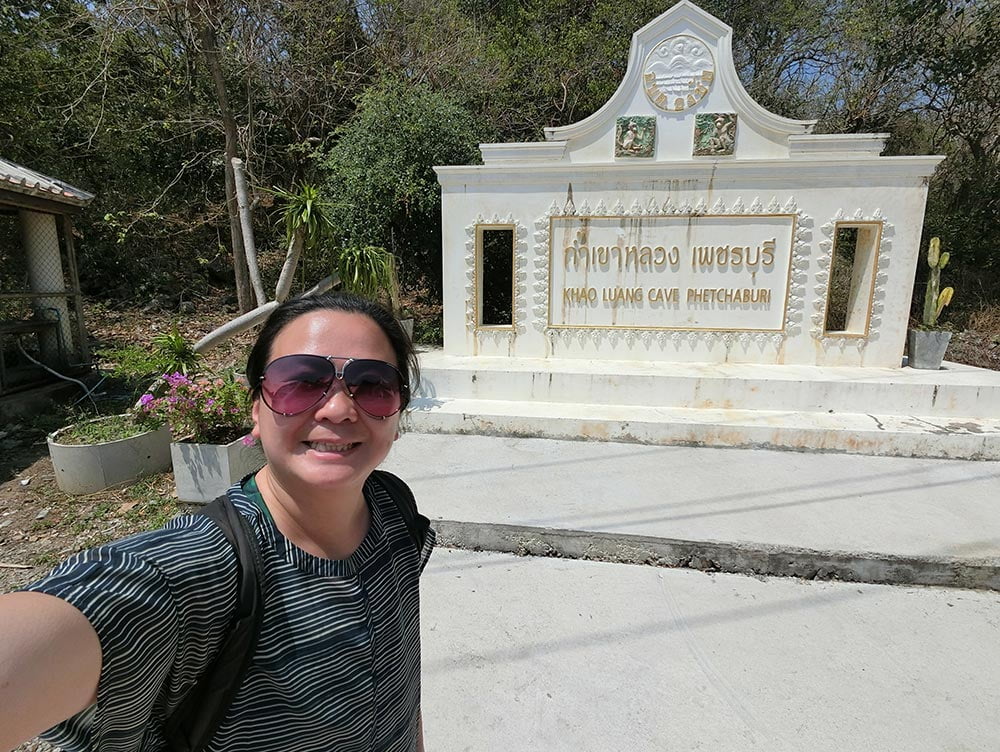
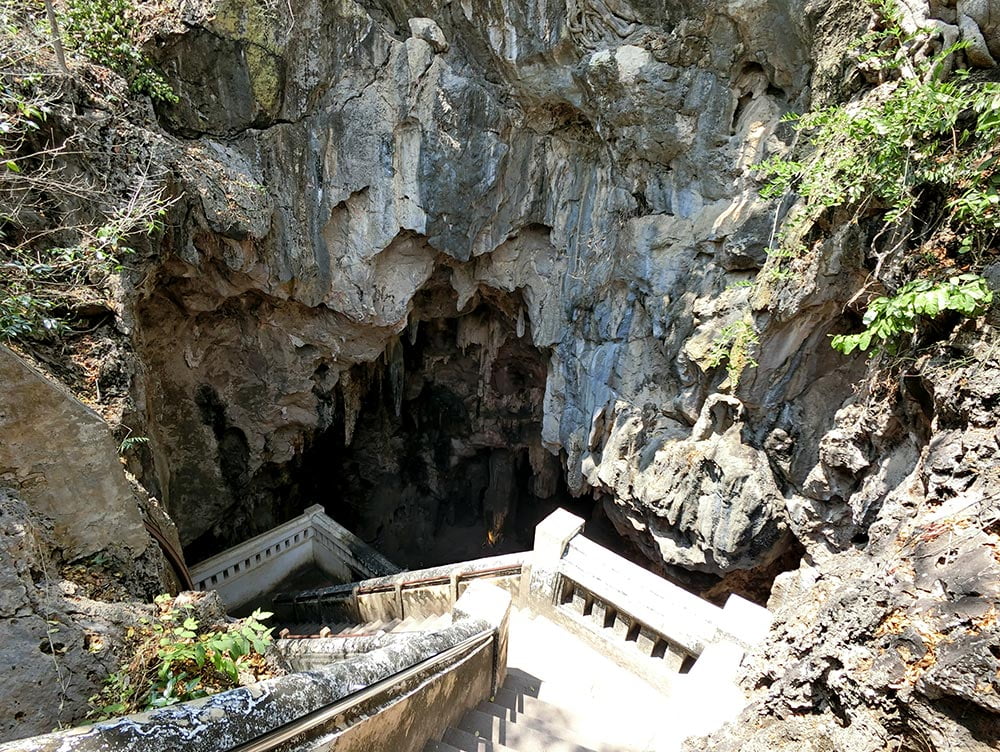
The first chamber has a hole in the ceiling, and if you google ‘Tham Khao Luang’, you’ll see many pix of the cave with these ‘god rays’ shining in, which is what draws most people to visit the cave. These rays are best seen on a sunny day in the late morning/early afternoon. There is a place for prayer and also apparently the Buddha’s footprint here as well.
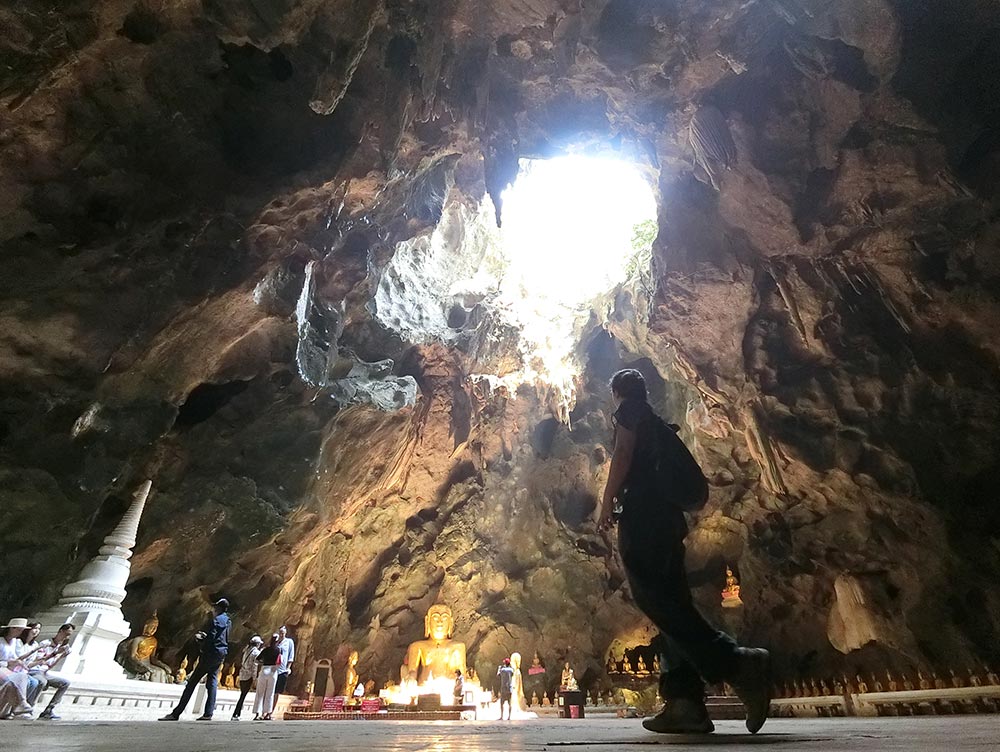
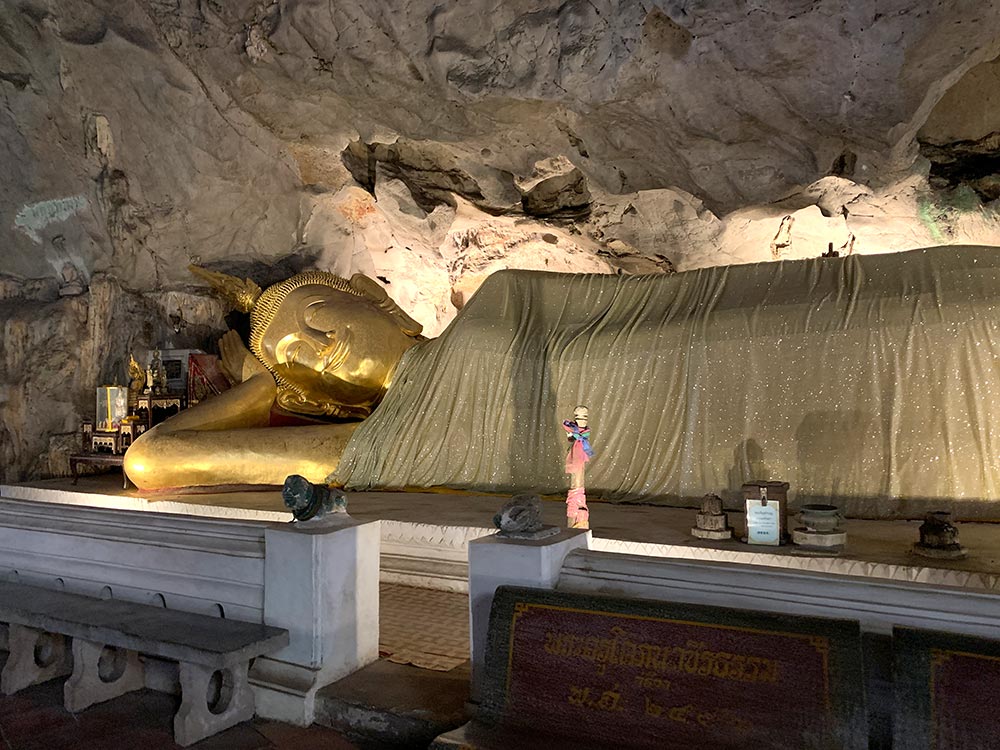
There is a smaller 2nd and 3rd chamber beyond the main chamber that host some smaller Buddha statues within. In the 2nd, there is also another spot with the god ray effect for pix. You used to be able to go out by the smaller 3rd chamber in the back but that stairway is currently blocked so just go back out the front.

A note that the carpark area is located at a temple at the foot of the hill called Wat Bun Tawee which felt a little bit more touristy. Besides a temple, there is a cafe located there and tuktuks to shuttle you up to the cave entrance on the hill.
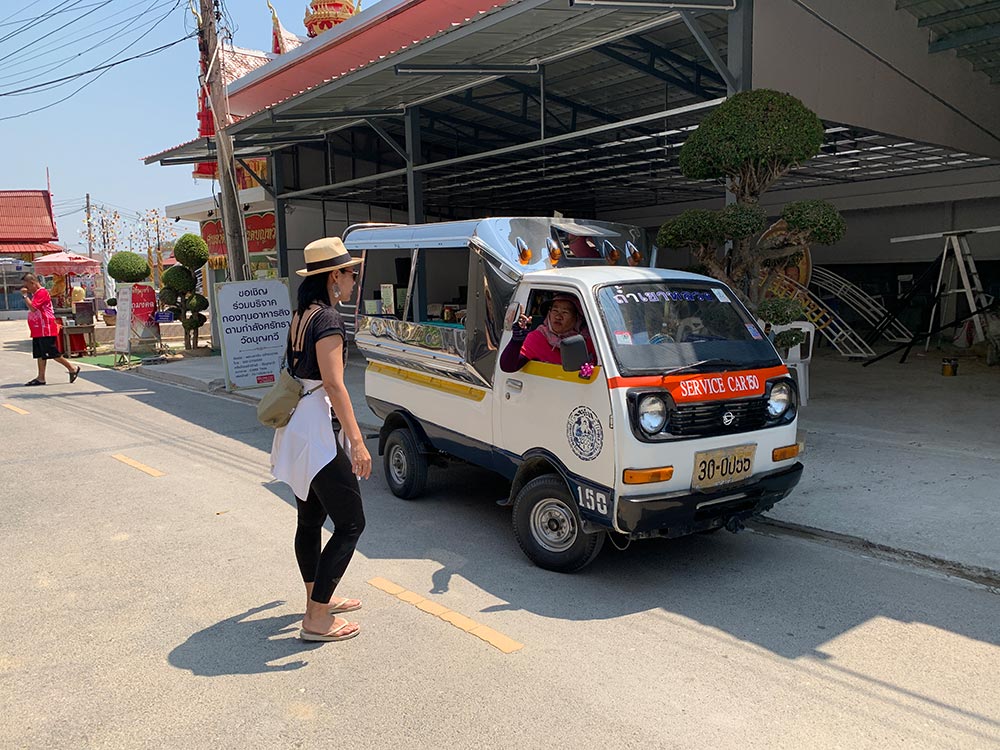
Tham Khao Luang ถ้ำเขาหลวง [Google Maps] Open daily 8am – 4pm.
Admission fee of 25 THB – 10 THB for entering the cave and 15 THB for round trip tuktuk transfer from the parking lot/drop off point at Wat Tumklaeb. You could walk up the hill, but the tuktuk is much more convenient and also not expensive at all.
There are lots of warnings about the monkeys here that can be quite fierce – don’t feed them and keep your belongings close.
Phra Nakhon Khiri Historical Park (Khao Wang)
Close to Tham Khao Luang is another very prominent sight you’ll see along the route to Cha am. Phra Nakhon Khiri Historical Park sits on top of Palace Hill or Khao Wang. This collection of historical royal buildings were built in 1859 by King Mongkut and feature an unusual mix of Western and Chinese architectural styles and were often used to host foreign envoys.
There are 3 main peaks and areas in this park, but we didn’t have a lot of time so we only walked around the main area near the cable car. You could hike up the mountain instead of taking the cable car if you prefer.

We headed over to the National Museum, the preserved house where the King and guests lived in. You have to take off your shoes to enter and there is an entrance fee, but unfortunately I can’t show any pictures of the interior because photos are not allowed. It’s an interesting mix of western and Thai styles and theKing lived in a very small space in my opinion!

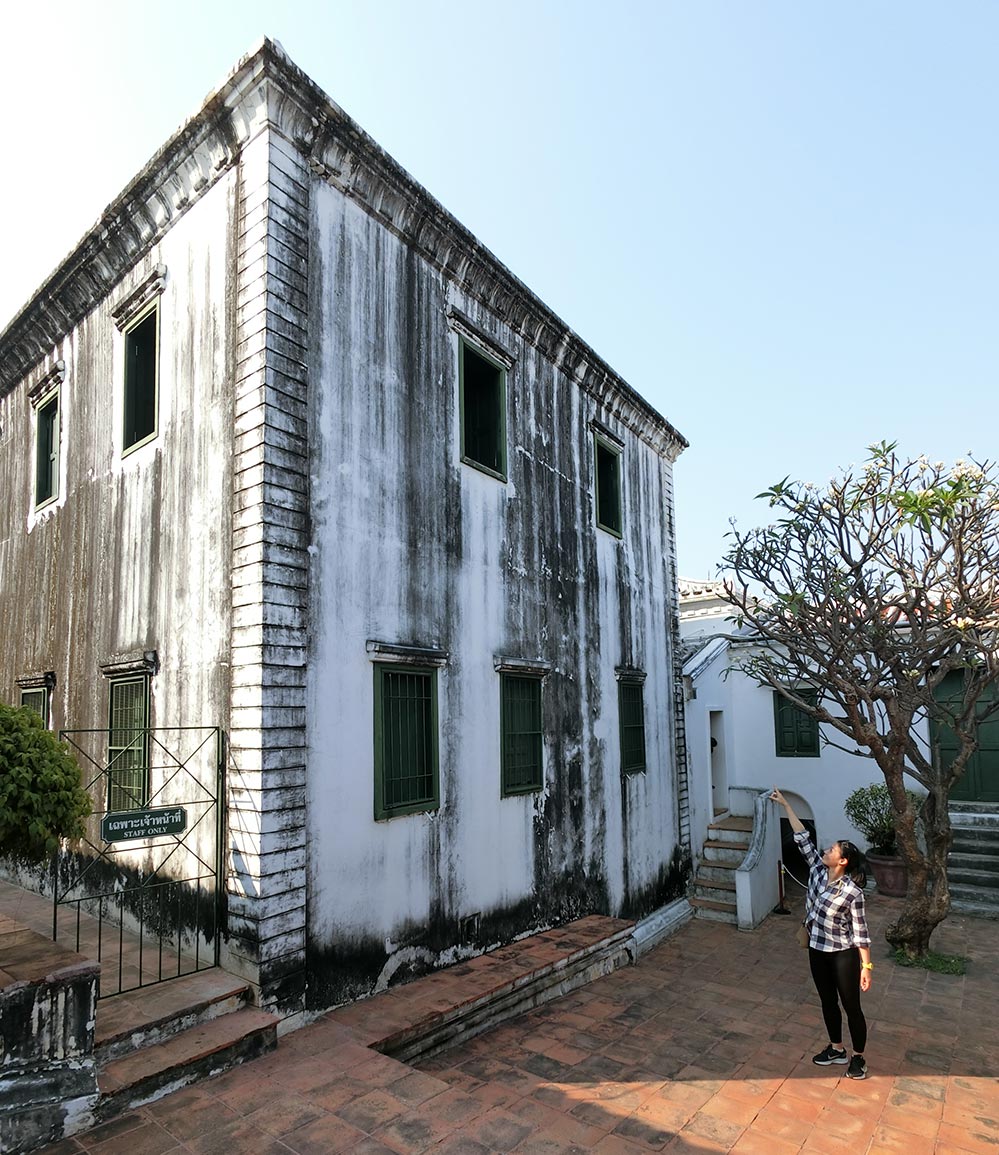
The park is a very lush area, with paved paths and lots of trees all around and you could easily spend an hour or two just strolling around. Beware the monkeys all around though!

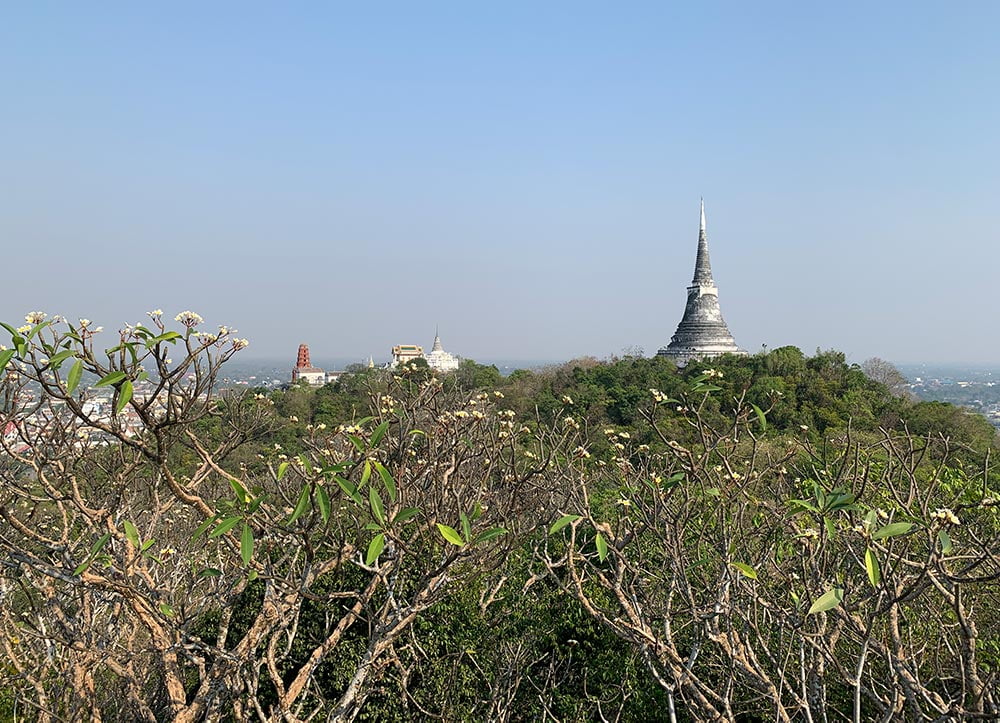

Phra Nakhon Khiri Historical Park (Khao Wang) อุทยานประวัติศาสตร์พระนครคีรี [Google Maps] Open daily 830am – 4pm.
Admission fee of 150 THB for entering the palace, 80 THB for round trip cable car ride, it’s free to just wander around the hill park.
You could walk up the hill, but the 3 minute funicular ride is much easier.
The park is split into 3 main areas that you can spend an hour or two exploring, but do look out for monkeys that can be quite fierce.
Where to stay in Cha am
SO Sofitel Hua Hin
I stayed at SO Sofitel Hua Hin resort which is located a short distance north of Cha am Beach. It’s a lovely resort along the coast thats very serene and worth considering if you want a nice, comfortable and luxirious stay in Cha am. Check out my SO Sofitel hotel review for more details or head over to SO Sofitel Hua Hin on booking.com [affiliate link].
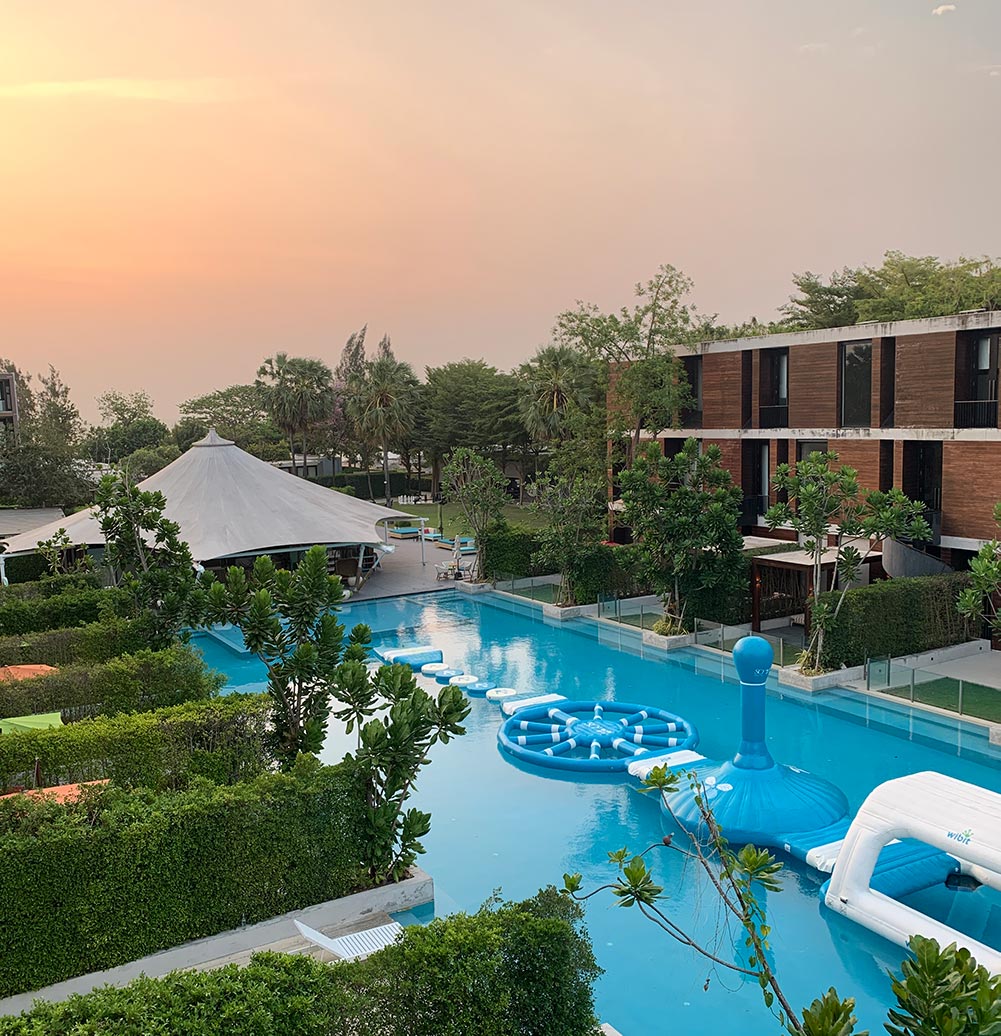
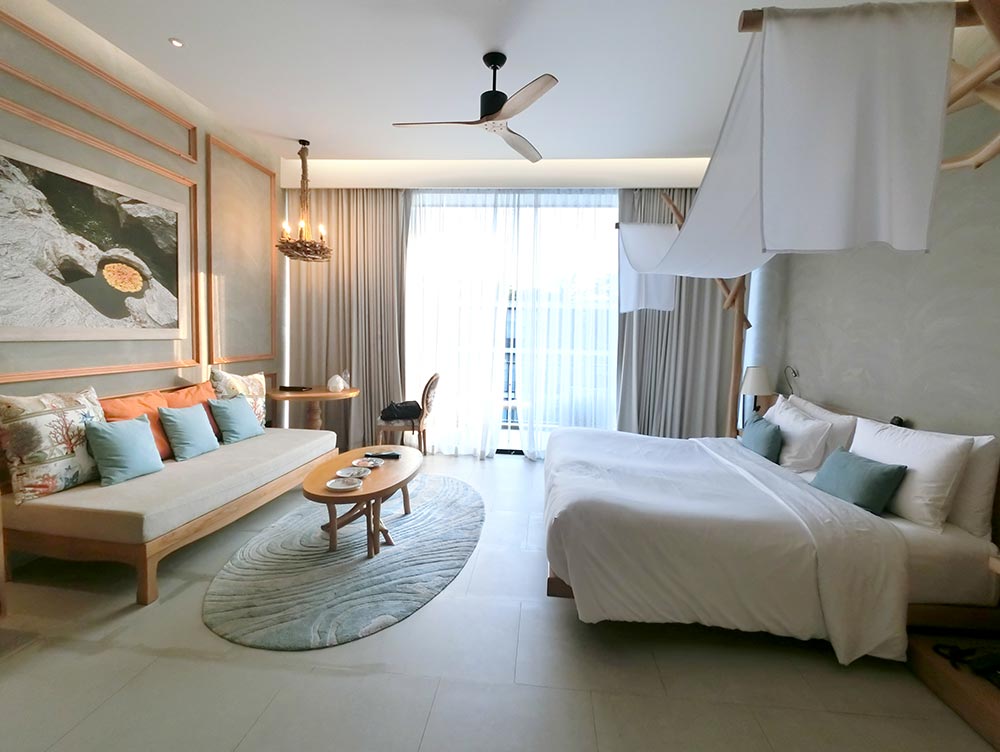
Other options
I looked up some alternative accommodation options that you can check out depending on your budget with a caveat that I haven’t tried them out for myself, but these have high ratings on booking.com [affiliate links] and are places I would consider based on my usual research to get you started:
My stay in Cha am was sponsored by – check out my hotel review to learn more about this lovely resort.
Have you been to Cha am? Tell me what I missed! Looking for more places to visit outside of Bangkok? Check out Ayutthaya or Amphawa or see more Thailand posts.


